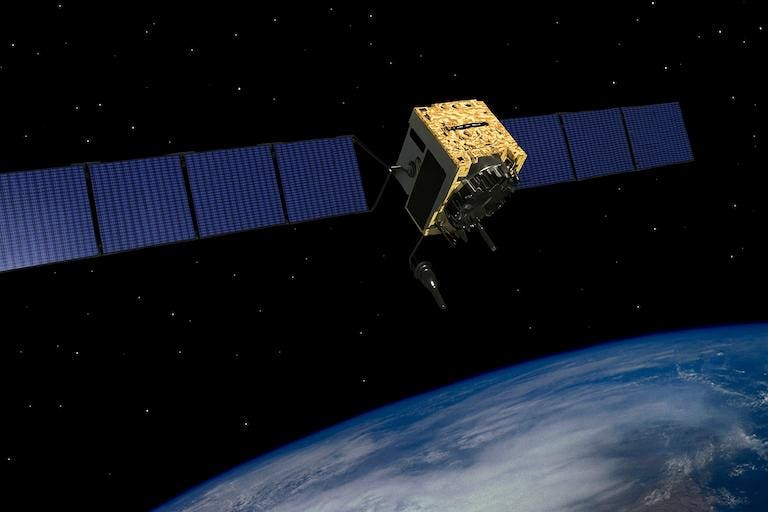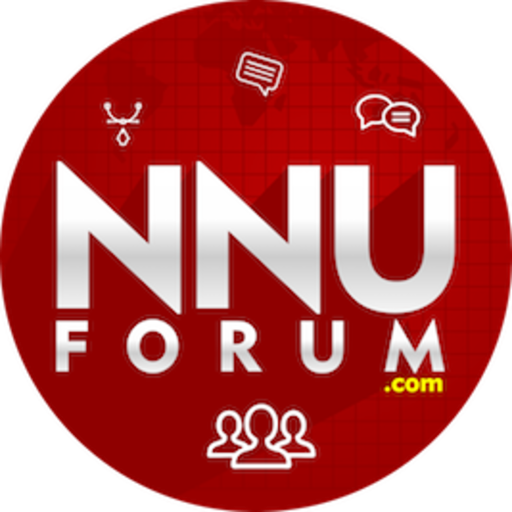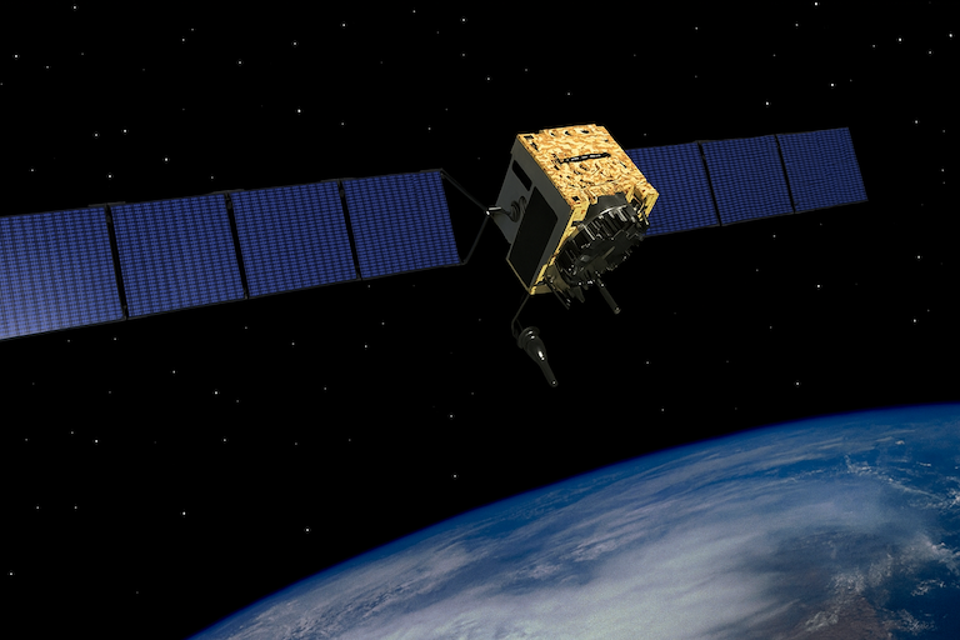Q-CTRL’s Quantum Solution For Safe Navigation

A GPS satellite
GPS.gov image library
Satellite GPS is a vital navigation technology designed for modern transportation including planes, ships, cars and smartphones. Everything works well unless GPS signals are jammed, spoofed or simply unavailable because of a technical glitch. If that happens to an airplane at 35,000 feet, that’s when trouble begins.
Unfortunately, GPS jamming and spoofing have become common in some regions around the world, including parts of the Middle East, Myanmar and Russia. A serious incident happened not long before this article was published. A plane carrying the European Commission president experienced GPS jamming, causing the pilot to circle a Bulgarian airport for an hour before landing. Disruptions like this demonstrate the susceptibility of our existing navigation systems. Anyone with a transmitter tuned to the right frequency and a powerful-enough amplifier can overwhelm faint GPS signals originating 12,000 miles above the Earth.
Thankfully, Q-CTRL, an Australia-based quantum startup, has developed a full-stack backup solution for GPS. Although it doesn’t yet offer an off-the-shelf commercial version, Q-CTRL’s system is flight-tested and validated on various aircraft, and now DARPA is funding Q-CTRL to build an ultra-ruggedized version of the system suitable for demanding military and commercial operations.
Q-CTRL’s Quantum Solution To The GPS Jamming Challenge
While most people never notice when a GPS disruption happens on a commercial flight, GPS jamming has become a persistent issue in areas where military tensions or cyber threats exist. If GPS becomes unavailable, pilots must look to alternative but inferior methods for navigation. Traditional backup systems such as inertial navigation units can only operate for short periods without drifting off course when GPS is not available to recalibrate them. And even newer backup technologies face shortcomings; for instance, visual systems can fail because of cloud cover or when used over water.
Dr. Michael Biercuk is the CEO and founder of Q-CTRL, which has successfully developed several advanced quantum products. He is also a former professor of quantum physics and quantum technology at the University of Sydney, where he specialized in quantum control engineering. Since GPS has had so many problems, I asked Dr. Biercuk if he thought GPS might eventually be replaced.
“We believe that GPS will remain the gold standard,” he said. “However, there is a real demand for backups and complementary solutions. And so we see that the quantum technology we’re deploying for airborne and maritime navigation will likely be ubiquitous. Nearly all relevant vehicles already have inertial navigation systems in them as backups. Our quantum sensors are the perfect complement to the INS, and ultimately to GPS. So we think they’ll all coexist.”
In my view, Q-CTRL quantum sensors are the best solution for navigation in some of the world’s most dangerous regions. These ultra-sensitive sensors can detect infinitesimally small traces of magnetic and gravitational signals from within the earth. The Q-CTRL system compares this data to sophisticated software maps for position validation, which in turn allows safe air, water or land navigation.
In April 2025, Q-CTRL demonstrated that its quantum-assured navigation system was 50x better than high-end traditional INS technology. Subsequent trials have expanded that figure to more than a 100x improvement, and the system has achieved positioning accuracy as good as GPS, with resolution down to 4 meters. In other words, the system can pinpoint your location on the surface of the planet to within 13 feet. Trials confirming this were conducted in real-world settings rather than just laboratory environments. In a maritime trial with the Royal Australian Navy, Q-CTRL’s quantum sensors operated as they would when deployed in a true navigation system — they required no special infrastructure and no external interventions.
Why Quantum Sensors Make A Difference
The physics of quantum sensors makes them uniquely precise and stable. As a vehicle moves, onboard quantum sensors continuously monitor the earth’s magnetic or gravitational landmarks, just as a hiker might notice a river’s curve or a mountain’s shape. Only quantum sensors are sensitive and stable enough to reliably detect earth’s magnetic contours over long periods to provide precise positioning in the absence of satellite GPS. Q-CTRL’s trials showed positioning accuracy within about 100 meters even over journeys up to 700 km.
I was curious about all the issues involved in deciphering such small gravitational and magnetic signals from the earth, so I asked Dr. Biercuk about his biggest challenge with Q-CTRL’s sensors. I thought it would take him a few minutes to gather his thoughts, but he responded immediately.
“Our biggest challenge is when you take an incredibly sensitive instrument like a quantum sensor out of the laboratory environment and mount it on a moving vehicle that shakes, vibrates and emits interference,” he said. “We deal with that by making the sensor more resilient using our special software, enabling us to do what others could not do.”
Defense applications must have access to stealthy, high-performing navigation tools that have unmatched size, weight and power (“SWaP,” as the industry calls it). In early tests, Q-CTRL’s navigation system was installed on compact drones, road vehicles and crewed airplanes without the bulky power limitations of existing alternatives. Q-CTRL has also partnered with Airbus as part of its efforts to develop a quantum-assured navigation platform for the commercial transportation industry. Because Q-CTRL’s navigational systems rely on neither external signals nor on RF or laser emissions (which would give away a vehicle’s position), they work for both civilian and defense applications.
Q-CTRL’s Software Shield For Quantum Sensors
Quantum sensors are susceptible to unwanted signals and environmental noise, but traditional shielding and hardware countermeasures are bulky and incompatible with real-world deployment. In its designs, Q-CTRL has avoided using hardware to shield quantum devices. Instead, it has developed proprietary software that uses physics-informed AI to reduce environmental noise. That approach has also allowed Q-CTRL to develop smaller and more robust sensors that matched or exceeded DARPA targets.
Q-CTRL’s focus on software-driven solutions sets it apart from sensor work being done by other companies. Using its advanced physics-informed AI software approach instead of hardware to mitigate noise and interference enables Q-CTRL sensors to meet strict military requirements for size, weight, power and stealth. As its miniaturization continues to improve, Q-CTRL will likely continue to scale down its products in size, scale up its production and reduce the costs, allowing it reach new markets.
A Map For Quantum Sensors
The World Magnet Map is essential for any system that uses the Earth’s magnetic field for navigation or orientation. The WMM allows navigators to use this correction for any point on the globe, thus ensuring navigational accuracy in the air, on land or at sea.
NOAA – National Centers for Environmental Information
Q-CTRL has developed two main types of sensors: magnetometers that measure subtle magnetic fields and gravimeters that detect tiny changes in gravity. Whether being used in an airborne, ground or maritime application, Q-CTRL quantum sensors collect gravity and magnetic data, then send it to a local navigation computer to compare real-time “denoised” sensor readings with existing software maps of the earth’s gravity or magnetic fields. Quantum gravimetric navigation detects the invisible contours of gravity caused by the underlying geology of the earth. Gravimetric measurements are more complex than magnetic but give an additional independent signal that is less susceptible to interference and works better at sea.
Cross-referencing magnetic and gravimetric sensor readings against precisely mapped data is especially important for stability and security. Even if every GPS satellite became jammed, vehicles using a fully-developed Q-CTRL system would be able to navigate on land, at sea or in the air — anywhere in the world.
During government trials, dual Q-CTRL gravimeters were rack-mounted on a ship and allowed to operate autonomously during the entire test to simulate a defense mission. It is important to note that the trial consumed a total of just 180 watts of power, setting a new SWaP benchmark for efficiency for the industry.
The Growing Market For Quantum Sensing
In my opinion, quantum sensing has become the most mature segment of the broader quantum market. Early adopters of quantum sensors are already benefiting from new capabilities in defense, resource exploration, healthcare and manufacturing. While quantum computing gets most of the attention and headlines, quantum sensing is already being commercialized at scale.
Industry reports predict that the global quantum sensing market will grow from roughly $377 million in 2024 to more than $1.2 billion by 2032. In the U.S. alone, the market is expected to reach $641 million by 2030 and expand at a CAGR of about 16%. This addresses only the sensor subsystems themselves and does not account for the value of end-use applications like the full navigation systems that Q-CTRL is building.
Most of the future growth in the quantum sensor market is expected to come from aerospace and defense. Government spending is likely to remain dominant as countries prioritize the initial applications for quantum sensors in security, military and strategic applications. That said, miniaturization will make packages smaller and more affordable. Once sensors are mass produced, there will surely be increased sensor deployment across wider applications. Companies that can deliver application-specific solutions on a large scale will also likely drive prices down and outperform classical alternatives.
Diverse Applications For Quantum Sensors
Quantum sensors aren’t limited to navigation. I have been following various uses of quantum sensors since 2019 and written about most of them. In early 2020, the Department of Defense began experimenting with quantum sensors for various battlefield uses, including military communications, electronic warfare and other sensing applications.
Over the years, other unique applications have emerged, such as probing the quantum origins of the universe using quantum sensors in next-gen telescopes. This work is being led by Prof. John Carlstrom of the University of Chicago. Each telescope will be equipped with 500,000 superconducting sensors that will allow it to measure light from the dawn of our universe when the entire observable universe was smaller than an atom.
High on my list of personal research interests are Rydberg RF quantum sensors and the work being done by Dr. David A. Anderson, founder and CEO of Rydberg Technologies.
Paul Smith-Goodson stands in front of large magnetic loop antennas used in his experiments in the 3 MHz to 30 MHz portion of the electromagnetic spectrum. A fully equipped array of 32 loops requires an acre of ground — a footprint that may eventually be radically reduced by the use of quantum sensors.
Hysky Technologies
For modern radio receivers to receive weak and distant RF signals, they require large and directional high-gain antennas tuned to the appropriate frequencies. I believe that current quantum sensor research will eventually replace both bulky wideband radio receivers and large antennas with a single small device.
Q-CTRL’s Path To Commercialization
Q-CTRL has quickly moved from the proof-of-concept stage to a commercial product. To put it another way, it has transitioned its quantum technology from a theoretical promise to a proven asset with practical utility. Quantum sensors are ushering in a new era in navigation, positioning and measurement science, especially through Q-CTRL’s groundbreaking use of software that has validated its products for both defense and commercial users.
In the future, I expect to see a new wave of products enabled by quantum sensors that can attain previously impossible levels of sensitivity and precision. We can expect quantum sensors to be used in applications such as quantum gyroscopes, inertial measurement units, medical diagnostics, expanded navigational uses and a whole host of space-based monitoring.
The accomplishments discussed in this article are based on a chain of milestones achieved by the dedicated work of Dr. Biercuk and his Q-CTRL team. However, the results also represent years of research and development by the entire quantum ecosystem. We are now at a point where quantum science is on the cusp of creating a robust, reliable and measurable quantum advantage that will transform how we navigate, discover and understand the world.

